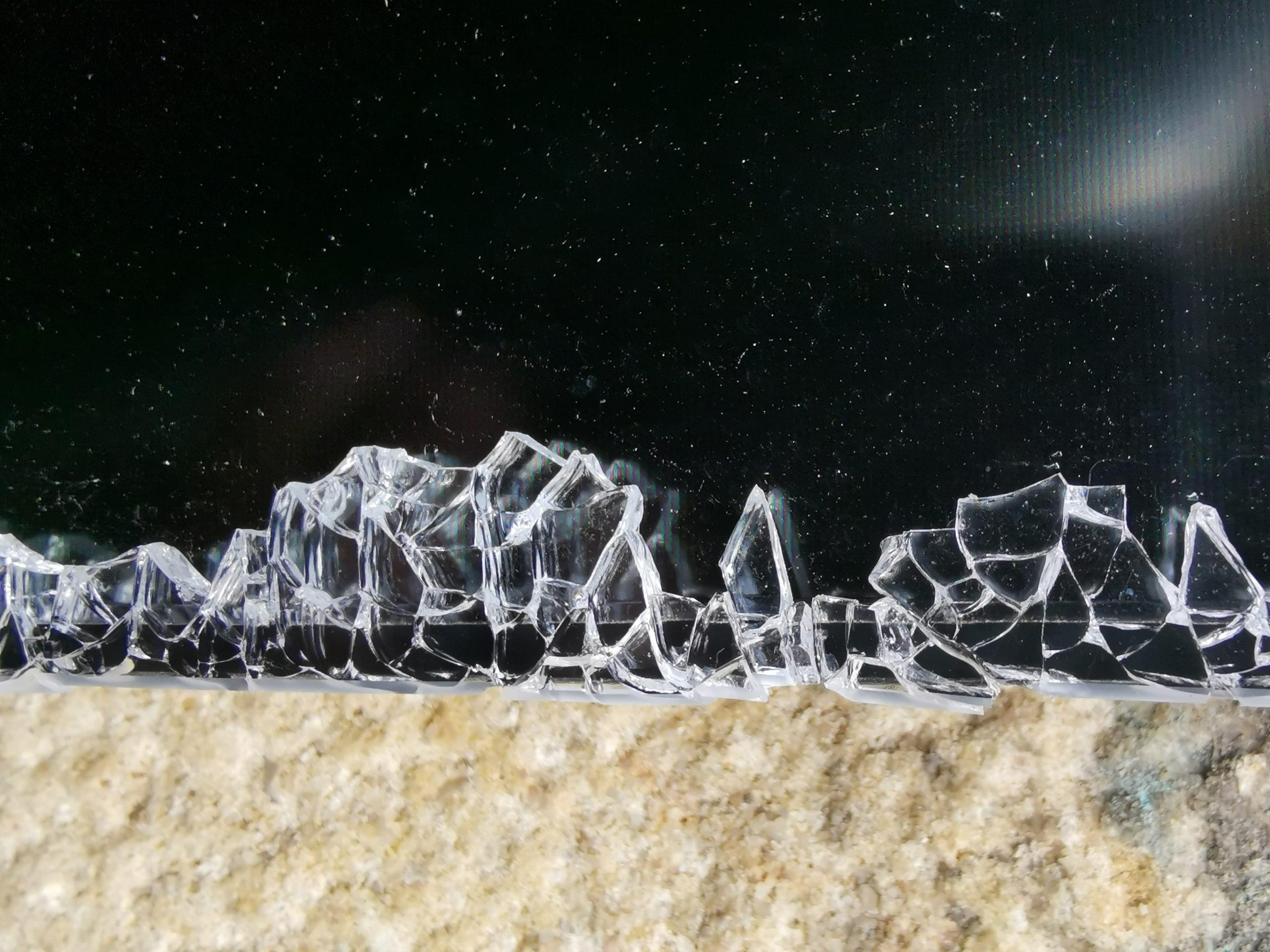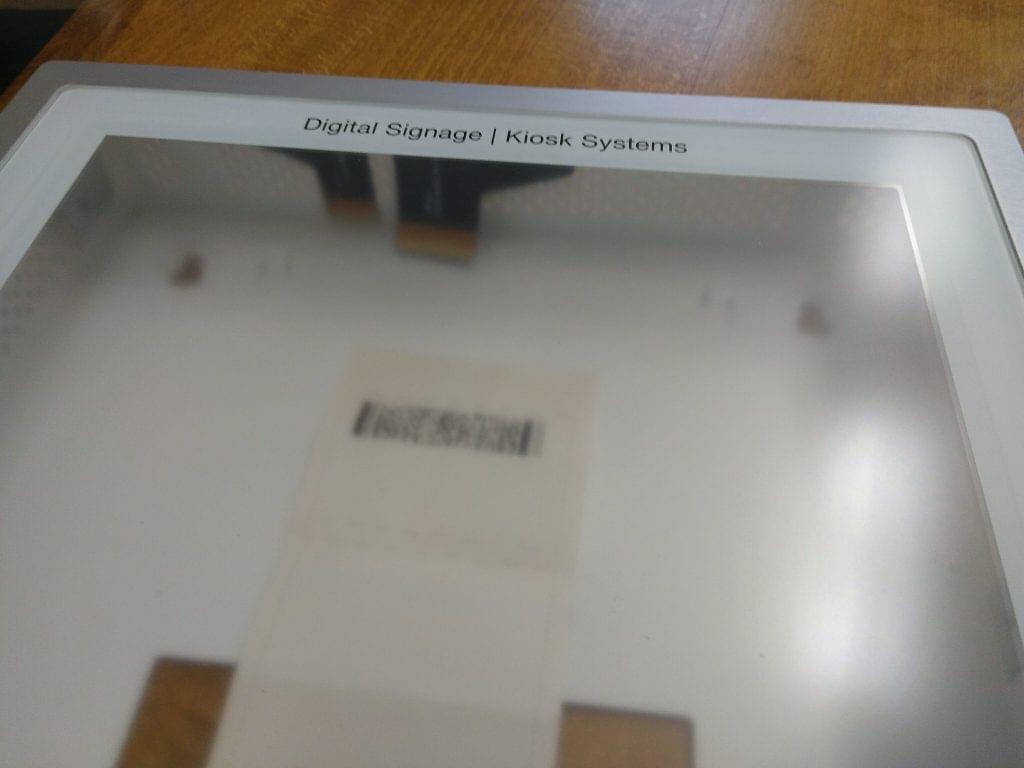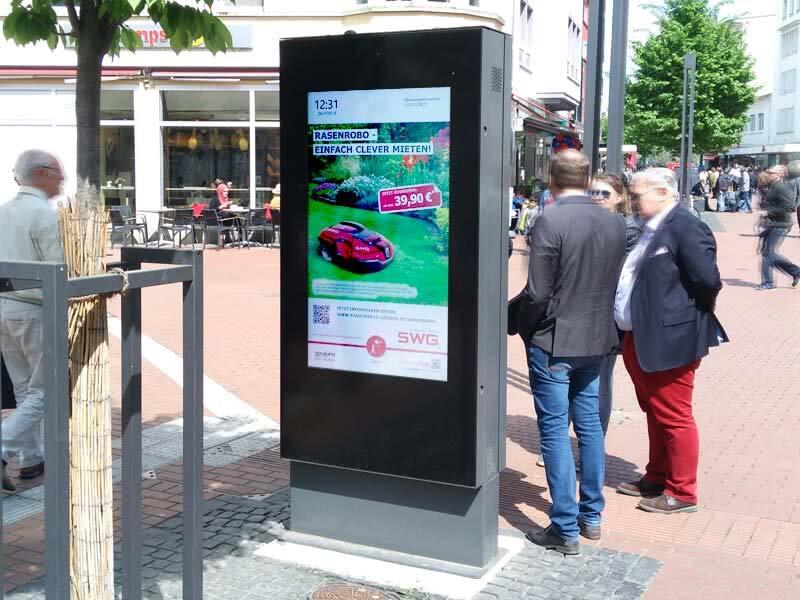Anti-reflective and hardened – Displays for every situation


Antireflection
To ensure that the visibility of the displayed content is as high as possible in all situations, we only use anti-reflective panes. Because nothing spoils customers more than not being able to recognize anything on a display.
Chemically pre-treated panes are mostly used, as they are available in different quality classes and can therefore be perfectly adapted to the place of use. With micro-etched panes, a high “milk glass effect” can be seen, which offers a stronger antireflection coating than the simply chemically antireflected panes, but which impairs the representation accuracy somewhat.
Inference-optical antireflection coatings are used less frequently because they are very expensive and the glass is no longer compatible with PCAP touchscreens after treatment. The anti-reflective glasses can be recognized by a slight bluish-red shimmer against the light. The use is particularly useful if the viewer and the glass are far away from each other, but a high visibility is to be achieved nevertheless.
If you need displays for particularly demanding locations, we can work with you to find the right solution, individually adapted to your situation.
Antireflection
To ensure that the visibility of the displayed content is as high as possible in all situations, we only use anti-reflective panes. Because nothing spoils customers more than not being able to recognize anything on a display.
Chemically pre-treated panes are mostly used, as they are available in different quality classes and can therefore be perfectly adapted to the place of use. With micro-etched panes, a high “milk glass effect” can be seen, which offers a stronger antireflection coating than the simply chemically antireflected panes, but which impairs the representation accuracy somewhat.
Inference-optical antireflection coatings are used less frequently because they are very expensive and the glass is no longer compatible with PCAP touchscreens after treatment. The anti-reflective glasses can be recognized by a slight bluish-red shimmer against the light. The use is particularly useful if the viewer and the glass are far away from each other, but a high visibility is to be achieved nevertheless.
If you need displays for particularly demanding locations, we can work with you to find the right solution, individually adapted to your situation.
